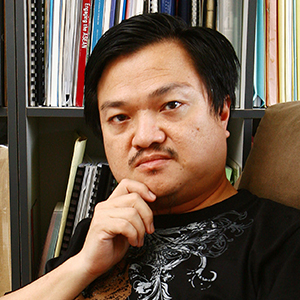Umno’s radicalisation has much to do with its narrowing electoral base, which has been sustained by two important tools: redelineation and increase of electoral constituencies.
Umno’s 2014 assembly – GE14’s first ceramah
If you feel angry for what you saw and heard on Umno’s just-concluded general assembly, be psychologically prepared, it may be a prelude of our Parliament for the next two elections.
One argument for our first-past-the-post (FPTP) electoral system is that it forces the parties to be moderate.
At the constituency level, since winning a seat in a straight fight requires a simple majority, the parties need to appeal to the middle-ground voters, rather than those radicals at the flanks.
Correspondingly, one may then assume the similar to happen at the national or state level – appeal to the nation’s or the state’s middle ground rather than the flanks.
That was basically Datuk Seri Najib Razak’s concluding message: Umno cannot win by alienating the Chinese.
But, the entire assembly before this last message was quite the opposite: from Tan Sri Muhyiddin Yassin’s attacks of liberalism, Khairy Jamaluddin’s defence of Malay privileges, Najib’s playing up of the May 13 spectre, to the allegations from Penang and Kedah that Chinese became rich by illegal activities and Quran was burned in a Chinese prayer ritual.
Umno knows well its winning or surviving formula now – minority rule.
While Malays are unquestionably a majority in Malaysia, Umno Malays are not.
So, for Umno to continue to dominate Malaysia, it needs to do two things: (a) turning just a bit more Malays to support Umno domination out of their fear of imaginary Chinese/non-Malay/Christian/Infidel domination; (b) amplify the power of Umno voters.
In that sense, Umno’s assembly is its first televised ceramah for the 14th general election (GE14). If last year’s assembly saw the party’s princelings fighting among themselves to decide who-gets-what, this year their guns were all trained outward.
But to win GE14, Umno cannot just radicalise the voters, but it must also significantly amplify the power of their radicalised supporters.
So, the next and ultimate pre-battle before GE14 is really the constituency redelineation process, which the active assistance of the Election Commission (EC) and the passive consent of you, as a voter, are both needed.
Umno’s minority rule weapon 1: intra-state malapportionment and gerrymandering
While the federal Parliament will vote on a simple majority to decide whether to accept the EC’s redelineation proposal, the redelineation process is actually state-based. In other words, boundaries are redrawn within – and not across – the states.
This process is stipulated by the 13th Schedule of the Federal Constitution. Its Part 1, Section 2 lays down four principles in dividing a state into constituencies, of which the two really important ones were on equal apportionment and “maintenance of local ties”. Theoretically, the EC does not have a free hand.
Sub-section 2(a) stipulates that electoral constituencies within the same state must be “approximately equal” in term of electorate size but rural constituencies can be smaller to compensate for their transportation and communicational difficulties.
This can only means two categories: normal constituencies that are approximately equal size and exceptionally small constituencies in remote inland.
So, did the EC follow the Federal Constitution? In the last delineation exercises in 2003 and 2005, the EC torn it apart and came out with its own five-category scheme (number of voters per parliamentary constituency in parenthesis):
metropolitan (70,000-90,000 voters)
urban (50,000- 69,000 voters)
semi-urban (40,000-49,000 voters)
semi-rural (30,000-39,000 voters)
rural (20,000-29,000 voters)
And not surprisingly, constituencies won by opposition tend to have more voters than those won by BN.
This is not because urban voters are more supportive of opposition or rural voters are more supportive of BN.
Instead, opposition strongholds often just become “urban” (read: oversized) so that either opposition voters are under-represented or opposition majority is diluted to deny it a victory.
Graph 1 below shows the constituencies of Kedah sorted by their electorate size after the 2003 redelineation.
It shows not only most of the constituencies won by the opposition in GE13 were oversized, but by the EC’s standard, fishing port Kuala Kedah (72,387 voters) and mountainous Baling (73,942 voters) were “metropolitan” while state capital Alor Star was only “urban” (56,007).

And even when constituencies are more equally apportioned, as in the four constituencies in Greater Johor Baru, ranging from 90,482 voters (Tebrau) to 101,041voters (Pasir Gudang) in GE13, the boundaries could be significantly gerrymandered, that the BN won all four seats with mere 52.45% of votes combined.
Can we do something about this? Certainly, state governments, local councils and any group of 100 or more affected voters in the existing constituencies can file protest and force the EC to organise inquiries.
However, the EC in the past had its field days in every redelineation exercise because they met with few and often weak objections.
If you want to make a difference, join the Delineation Action and Research Team (DART) sponsored by Bersih 2.0 and Engage, and be one of the 100 democracy fighters in your constituencies. – December 3, 2014.
* This is the personal opinion of the writer or publication and does not necessarily represent the views of The Malaysian Insider.


Comments
Please refrain from nicknames or comments of a racist, sexist, personal, vulgar or derogatory nature, or you may risk being blocked from commenting in our website. We encourage commenters to use their real names as their username. As comments are moderated, they may not appear immediately or even on the same day you posted them. We also reserve the right to delete off-topic comments